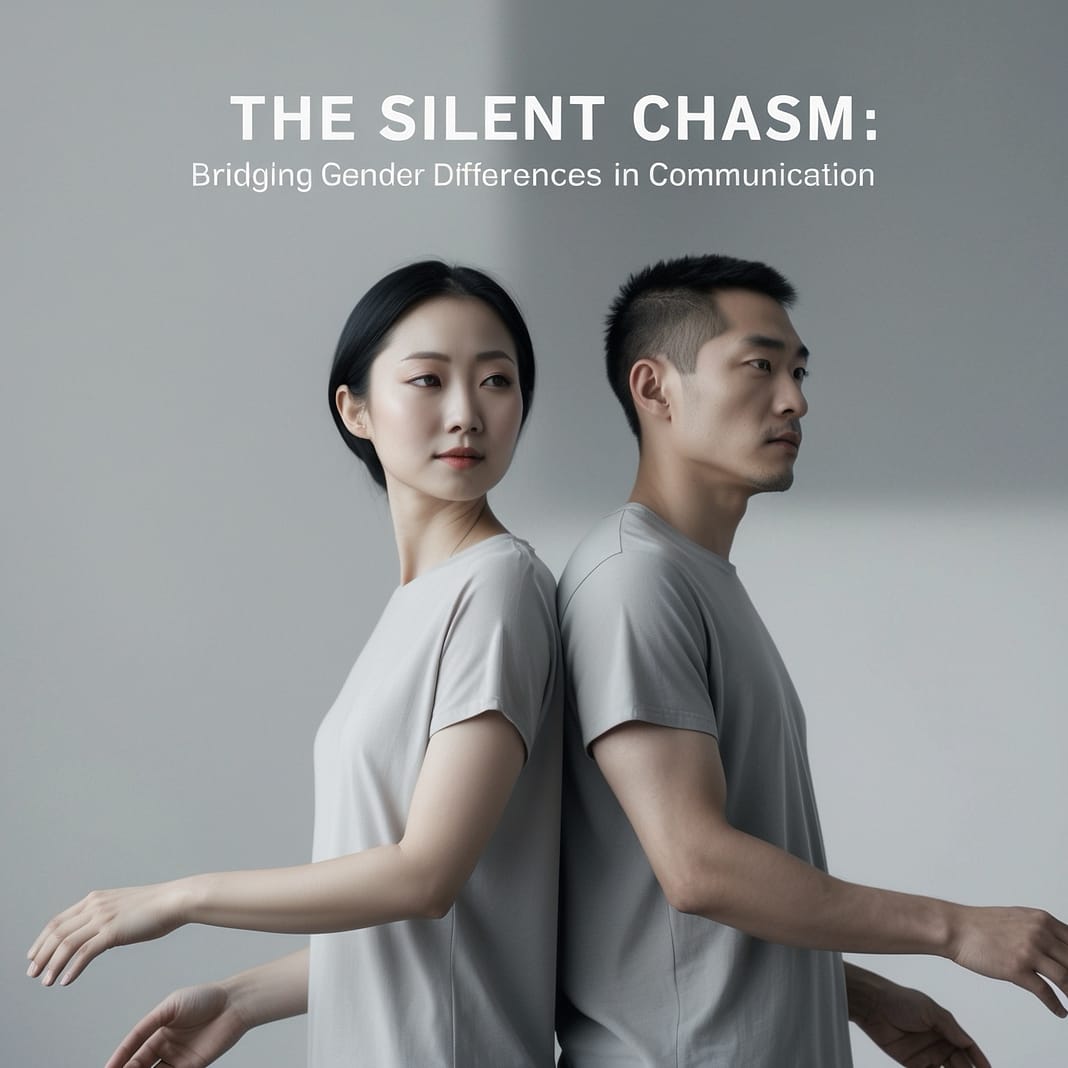We speak, but the words we choose are only half the story. The spaces between syllables, the tilt of a voice, the silence that says more than any sentence—these are where meaning resides. And yet, too often, we find ourselves lost in translation, not between different languages, but between different ways of being. Men and women, shaped by forces they did not choose, learn early how to speak, but not necessarily how to hear. It is the quiet chasm between intention and understanding that leaves us reaching across an invisible divide.
In this world, we carry expectations not as shared burdens but as silent assumptions. We believe the other understands, that they will intuit our needs, not because they’ve been told, but because we hope they simply know. But what happens when these unspoken hopes fall on ears untrained to listen? When uncommunicated expectations fester into frustration, we stand at the edge of miscommunication, watching the potential for connection drift away. There is something human about this—our desire to be known without having to explain, to have our needs met before the weight of them is spoken aloud.
The Weight of Unspoken Words
From childhood, boys are given the language of assertion and action. The world asks them to be direct, to get to the point, to fix things. The more decisive the voice, the more it is respected. There’s little room for vulnerability in such directness. In this realm, emotions might be acknowledged, but they are rarely invited to linger. A man is told he can be angry, but to cry, to doubt, to dwell in sadness is a private matter. And so he learns to speak in solutions, in facts, in the currency of information.
For women, however, the lessons are different. To be a woman is to be told that your words must do more than convey; they must console, they must build bridges. Women speak not merely to inform but to connect, to draw others closer to the warmth of understanding. The language of rapport becomes second nature, often wrapping vulnerability in layers of politeness, suggestion, and question. When she says, “Maybe we could try this,” she is not simply proposing a solution; she is offering a hand in the hope of mutual recognition.
And so, when these two worlds collide, misunderstanding is not far behind. One listens for solutions, the other for sympathy. One offers advice when the other only wanted to be heard. The chasm grows wider with every word exchanged, not because we speak too little, but because we speak from different hearts, different histories.
The Unseen Influence of Society’s Hand
We cannot overlook the architects of these differences—society itself, with its subtle and not-so-subtle hand, shapes how men and women are taught to communicate. It’s not just biology that drives these differences, but the weight of centuries. Men, expected to lead, are taught to speak with authority, to make themselves clear in the fewest words possible. Women, expected to nurture, are taught to speak softly, to fold their voices into the fabric of others’ needs.
In many cultures, the unspoken expectation is that women will communicate indirectly, that their requests will be wrapped in consideration and care. “Maybe,” “Could you,” “I was wondering”—these are the tools of a woman trying to balance her needs with the comfort of those around her. This isn’t a weakness; it’s a survival mechanism, a learned response to a world that often punishes women for being too direct, too assertive.
Men, meanwhile, may be less expressive in their emotional language, not because they lack emotion, but because the world has rarely given them permission to dwell in it. When a man responds to a problem with a solution rather than sympathy, he’s not necessarily dismissing the emotion behind it. He’s trying to help in the way he’s been taught—by fixing things, by offering what he believes is most valuable: action, not introspection.
Cultural Shadows and the Expectation of Silence
Cultural differences further complicate this already delicate dance. In some cultures, men and women alike are taught that certain things are simply not spoken. In high-context societies, communication is layered, dense with meaning that is not on the surface. Expectations are woven into the unspoken, and silence speaks louder than words. To ask for what you want directly might be seen as rude or presumptuous, a violation of the unspoken agreements that bind people together.
In other cultures, especially those steeped in individualism, the expectation is the opposite. Communication is direct, explicit. If you want something, say it. If you’re unhappy, speak up. But even here, gender lines are drawn. A man who is too emotional, too indirect, may be seen as weak. A woman who is too direct may be labeled aggressive or bossy. These invisible rules create a constant tension, a push and pull between what we feel and what we believe we’re allowed to express.
Trending Voices: The Conversation on Communication
As conversations about gender and communication continue to trend online, people ask, “Why do men seem to avoid discussing emotions?” It is not that men are incapable of emotional depth. It is that society has taught them to bury it under the weight of expectations—to be strong, to be stoic, to fix rather than feel. This restraint is not innate; it is learned. Similarly, the question “Why do women apologize so often in conversations?” reflects an age-old conditioning where women have been socialized to soften their presence, to make room for others even in the space of their own words. Apologies, in this context, become less about guilt and more about navigating a world that expects women to tread lightly.
Even now, as we move through a world increasingly aware of gender dynamics, these trends remind us how deeply embedded these differences are. We see Google searches asking, “How can we bridge the communication gap between men and women?” And it is here that we must pause and reflect. The answer does not lie in changing the nature of men or women, nor in demanding that one group adopt the style of the other. It lies in listening—truly listening. It lies in creating spaces where both directness and subtlety, solutions and sympathy, can coexist without judgment or assumption.
Toward a New Kind of Listening
If we are to bridge this chasm, we must first learn to listen, not just to the words spoken, but to the spaces between them. We must listen for the uncommunicated expectations, the unspoken needs that linger behind politeness, frustration, or silence. Men must learn that not every problem needs a solution—sometimes, the solution is in simply sitting with the pain. And women must trust that they can speak their needs openly without fear of being too much, too assertive, too anything.
We must stop pretending that communication is only about clarity of speech. It is about clarity of understanding. It is about daring to ask, “What do you need?” and daring to answer, not in half-measures or assumptions, but in truth.
Only then, when we stop listening with our own expectations and begin listening with empathy, can we close the gap. We are more than the words we say, and the words we leave unspoken are not the measure of our worth. They are simply the shadows of a conversation waiting to be had.
Discover more from The Reasoned Journey
Subscribe to get the latest posts sent to your email.


